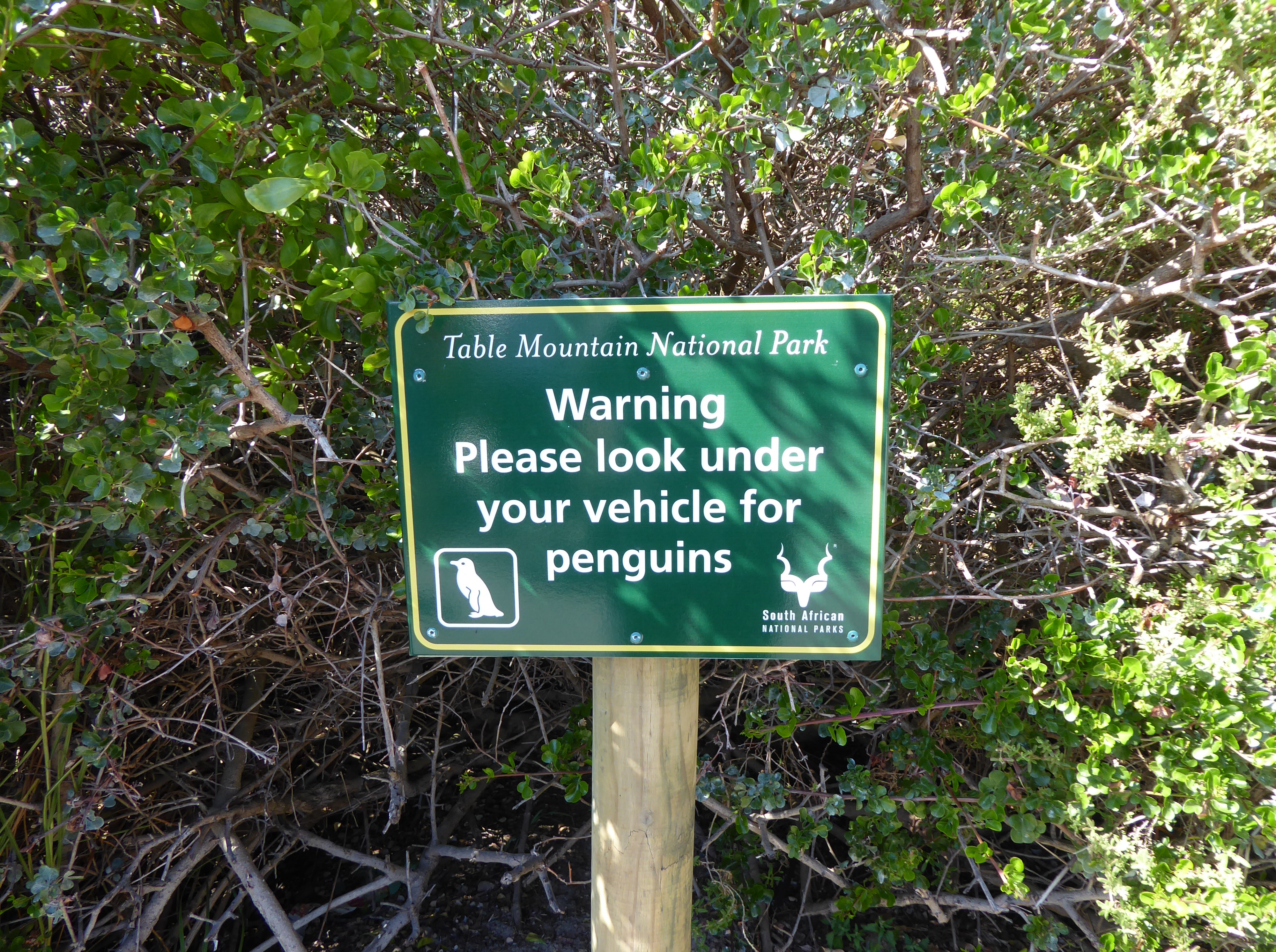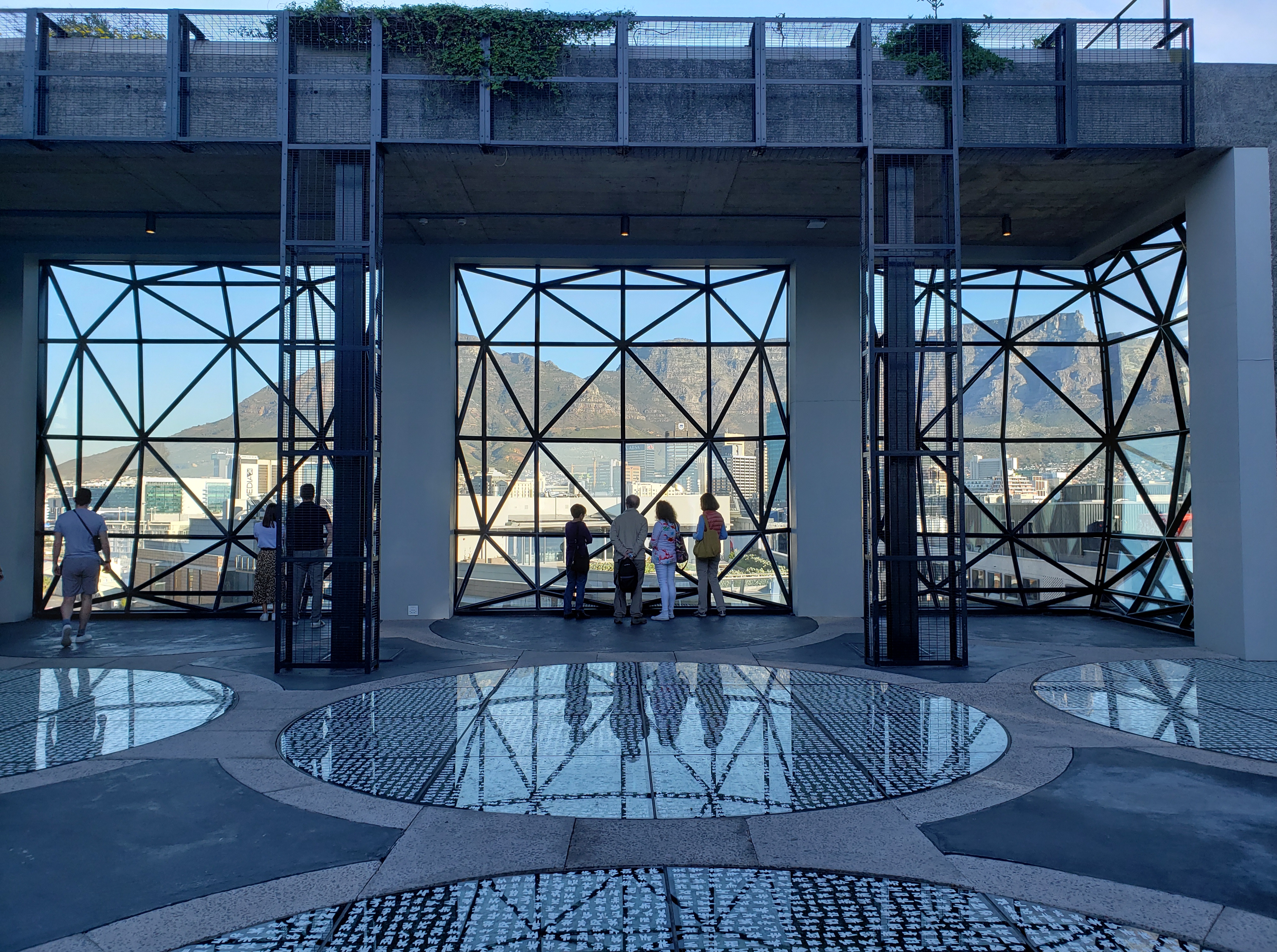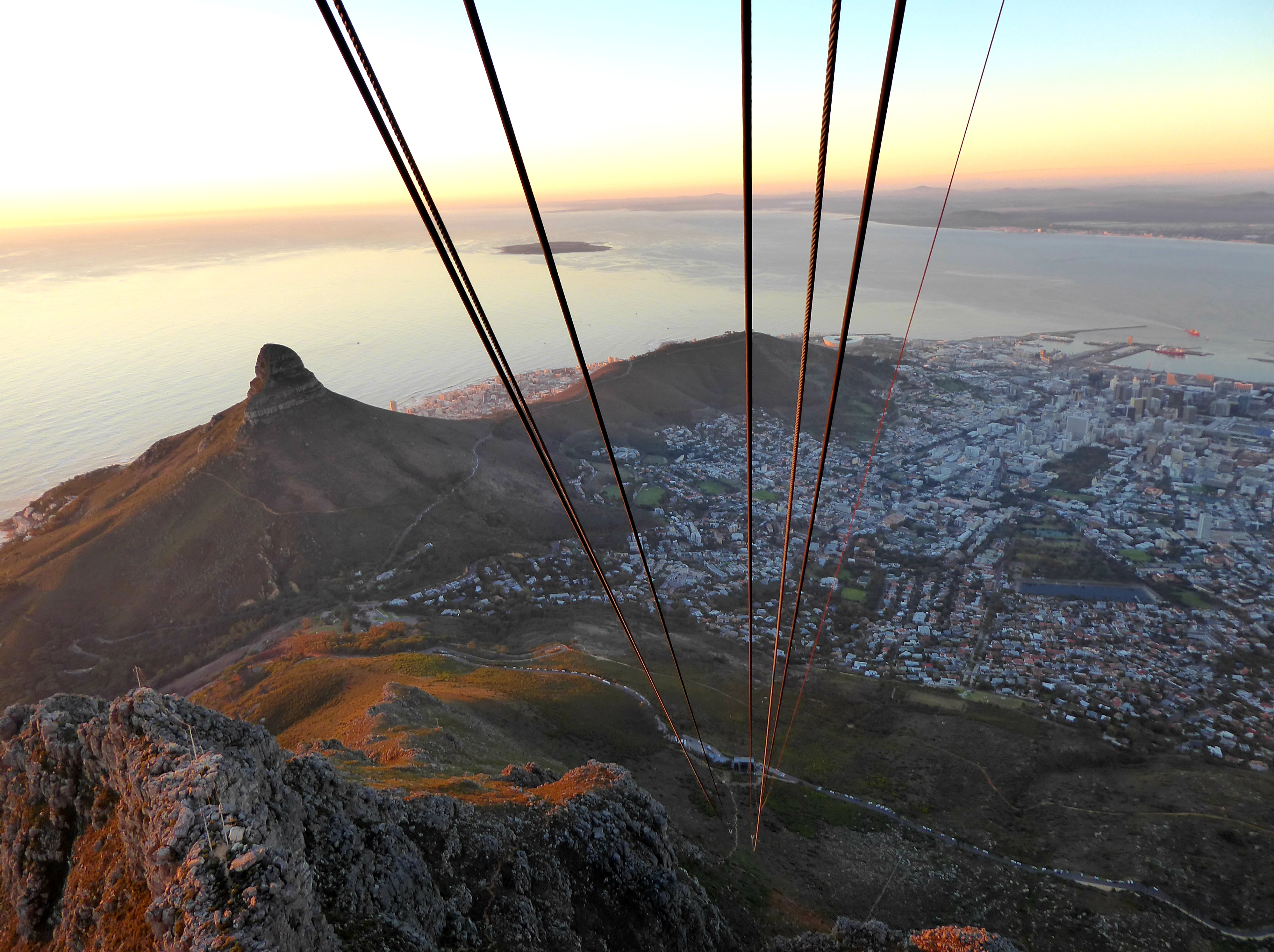
12 April to 29 April 2019
I. Joburg to Cape Town
Taking the train from Johannesburg to Cape Town is not a popular option. Those who can afford to, fly and those who can’t, prefer taking the bus. But being partial to train travel, I found the twenty-six hour train trip appealing and booked a berth on the Shosholoza Meyl train.
Before embarking at the Joburg station, I met a British couple and their extremely articulate, poised teenage daughter Estelle. Later, the daughter revealed her sleepless nights fearing the world’s end, in precisely twelve years, if the effects of global warming were not halted. Her fifteen-year-old shoulders were far too young to be carrying such an enormous weight.
A sixtyish woman with bleached blonde hair and nose ring shared my compartment for several hours. When she wasn’t complaining about the delays and calling her son with constant updates, she was sharing the sordid details of her husband’s murder by his lover and her husband, because, according to her, ” He wouldn’t divorce me to marry her.” She described the slaying, completely unsolicited, as if she were describing the interior of a kitchen she was remodeling. I headed to the dining area soon after and stayed there until I was certain the woman reached her destination.
I began speaking with Terrance, who managed the dining car, during his free time. He always had a book in hand and had read every self-help book he could acquire. He’d come from abject poverty, but his mother instilled in him a passion for learning. He was fortunate. Many of his friends were dead or in jail.
For the rest of the voyage I alternated my time between the dining car for conversation and dining, and stretching out on my berth reading the inexplicably engrossing second volume of Karl Ove Knausgard’s My Struggle.
Before leaving Joburg, while still on the train platform, I briefly met a young girl of six or so who spontaneously reached up to hug me. I told her it was one of the best hugs I’d ever had. She and her mother were traveling on the same train to Cape Town. I told them I would see them later.
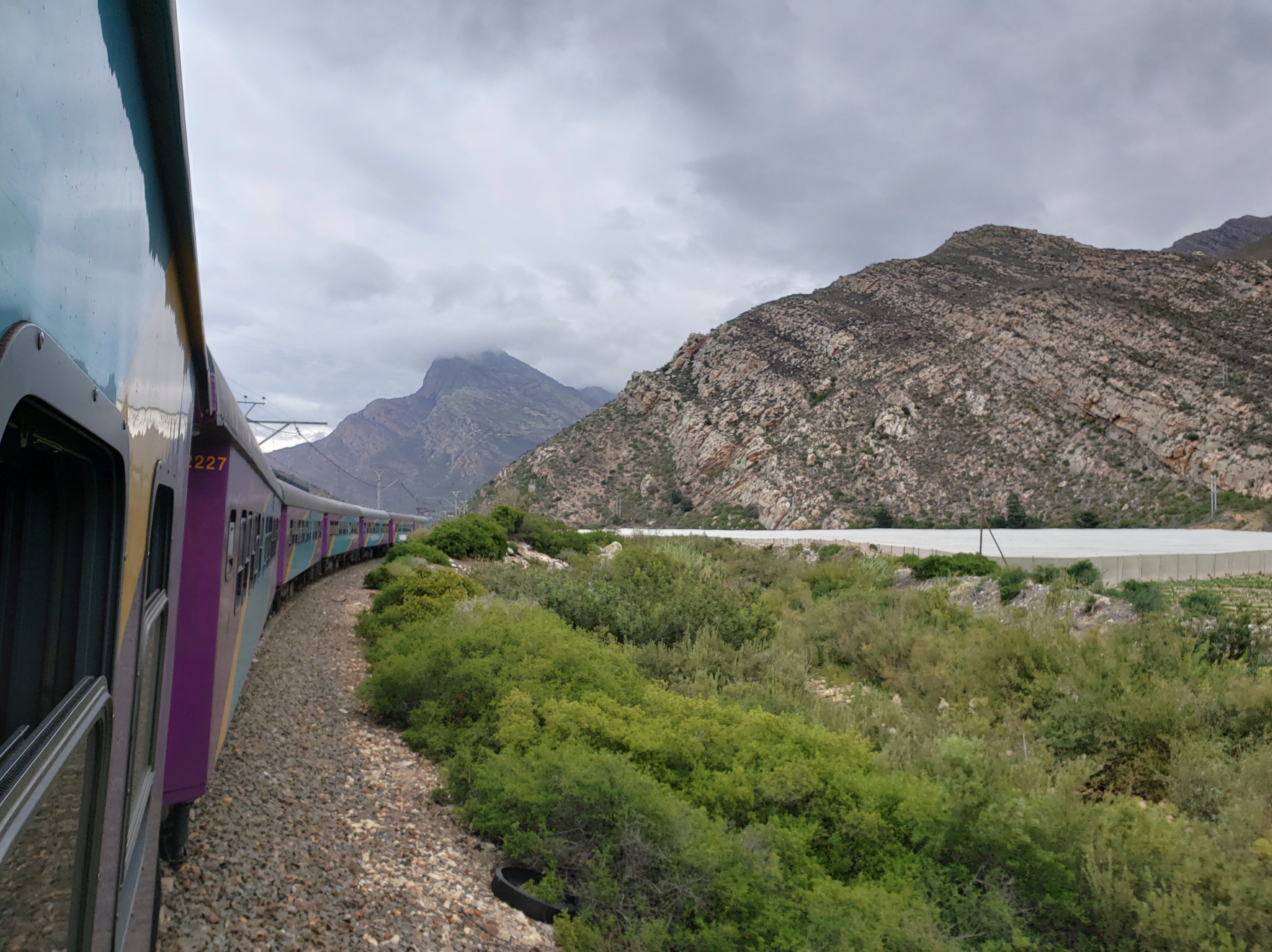
But, I didn’t. That evening I took a walk through the cars. I hadn’t realized that the dining car that I’d been enjoying for meals, conversation, and relaxing, divided the train into two parts. Passengers with reserved berths, were the only ones with access to the dining car and the entire train.
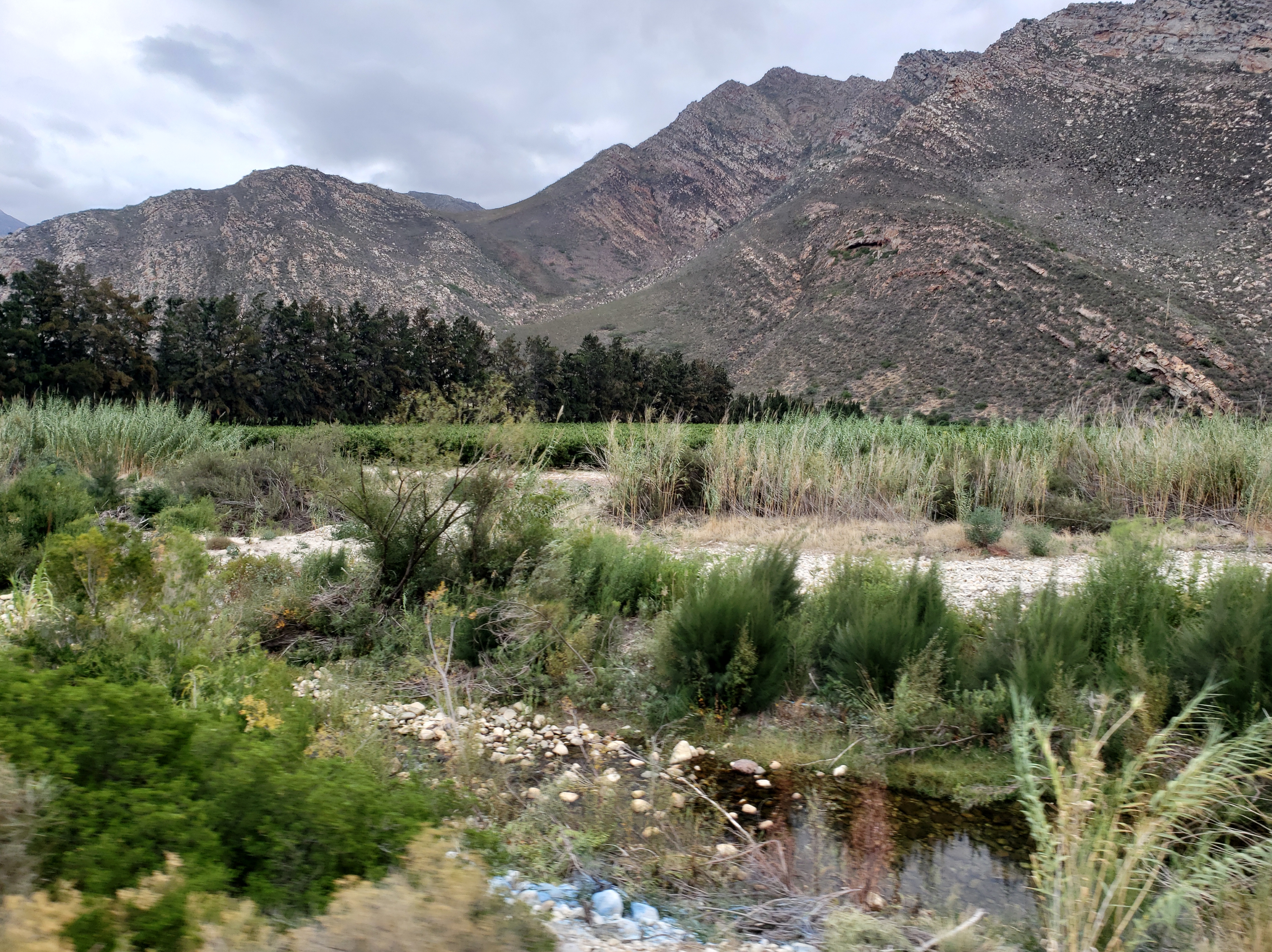
When I stepped into the first car past the dining car, it only had seats. There were no compartments nor berths. The car was crowded, unlike the section of the train I’d been traveling in. Women were busy tending to their children or trying to sleep sitting up. The few men were engaged in a game of poker or sneaking a smoke between cars. Large parcels, which presumably contained in part water and provisions to last the trip, were positioned throughout the car. There was no place for the adults to recline. Babies and small children, nestled together and slept on clothes and blankets carefully arranged on the floor. All the passengers were black. Where I was enjoying the comfort of berths and separate compartments, all the passengers were white.
As I went from car to car looking for the girl, I was met with looks of surprise, apparently few tourists ventured to this part of the train, but my smile and greeting was received with warmth. A few curious passengers asked where I was from.
A few cars later, I saw the girl sitting next to her mother. “I found you.” I said unable to contain a big smile. The girl once again outstretched her arms and we embraced. Once again her hug with its warmth and innocence instantly touched my heart. After some moments chatting together I wished her and her mother a good evening and made my way back through the many cars of seated passengers to my berth.
Coming from a family of modest means, I did not grow up being one of the “Haves” in a land of “Have-Nots.” Here it was inescapable and unsettling.
The twenty-six hour train trip stretched into thirty-two. Along the way we stopped at a small community for fifteen minutes. I got out to stretch my legs, breath in some fresh air, and take a few photographs. Others went out for a smoke and some picture taking too. Children were playing nearby with some wheels and a stick. The community was poor and the homes were very basic. Within minutes a camera was snatched from the hands of an older German tourist. The thief ran off and quickly disappeared. A Swiss, well-built man did his best to follow, but came back empty-handed. We had been given no warnings from the crew, but the deftness of the offender undoubtedly came from practice.
My own experience with theft was less dramatic. Back at the Joburg station I’d bought some drinks and snacks for the trip at a small supermarket. I didn’t buy much, and didn’t pay much attention to the price given in the local currency. But after buying a drink on the train, I questioned the amount I’d paid and looked at my receipt. The cashier, while scanning my items, also scanned an expensive package of imported prosciutto. I suspect any misgivings she may have had would not taint the taste of the delicacy.
The train ride continued peacefully and uneventfully. The enjoyment of the generally unchanging, but nonetheless picturesque plains of the “Karoo,” allowed time to pass pleasantly by.
I had planned on arriving at my rented apartment in the daylight hours, but with the delay it was nearing 10 pm. After the many warnings I’d received about the crime rate in Cape Town, something I would hear over and over again, seeking out a taxi ride at the station was something I’d hoped to avoid. When I overheard a fellow passenger calling for one, I asked if she could arrange a pickup for me as well. She made this trip often and knew many of the drivers by name. She arranged for one of them to meet me upon arrival.
II. Arriving in Cape Town
As we disembarked at Cape Town’s central station, I looked for the young girl and her mother once again to say goodbye, but did not see them. They and most of the other passengers had inevitably gotten off at the previous station on the outskirts of town where the townships are.
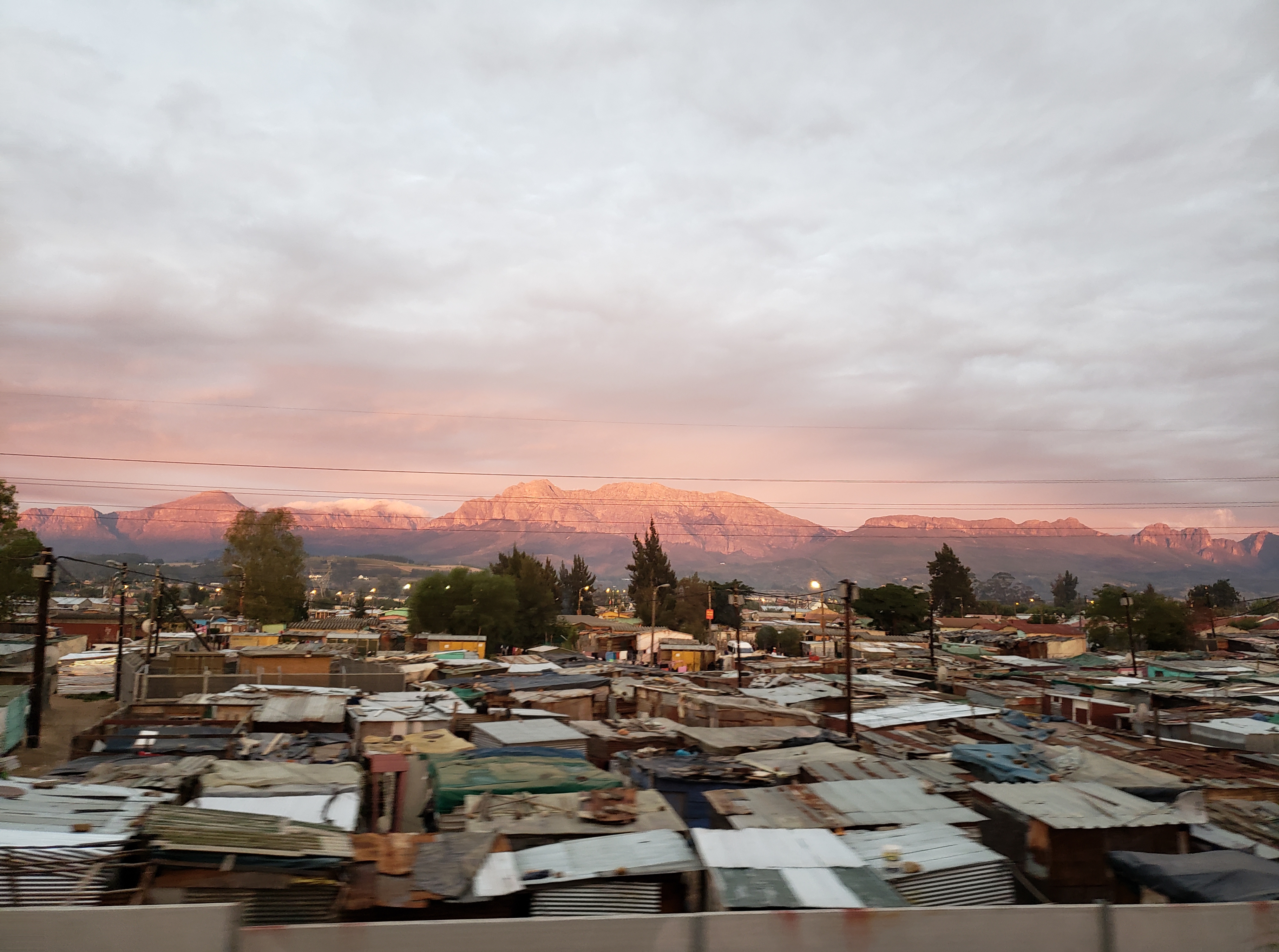
I invited the British family to join me and we all walked from the train to the taxi area. The large station was nearly empty and quiet, but not, as I had expected, intimidating. There were no hustlers nor hawkers in sight. Just a few tired travelers, like us, heading toward their destinations with bags in tow. An “Excite” taxi was waiting at the exit. After dropping off the family at their hotel I asked the driver if we could make a quick stop at a store so I could buy some food. I hadn’t bothered to eat dinner on the train expecting an arrival at every moment and dining in a restaurant at that hour did not appeal to me. Despite doing little and having ample time to stretch out and relax during the long journey, I was tired and wished only for a quiet evening alone at home. The driver graciously obliged.
The beauty of Cape Town that I had heard so much about, was obscured by the busy four-lane road we drove on dotted with a few fast food joints and large, nondescript buildings. The driver pulled up to a service station and I dashed in. The pickings were slim, but I found some bread, cheese, and yogurt with unfamiliar brand names to sate my hunger.
The apartment I’d rented had a metal electric gate, as most of the residents in this rather upscale neighborhood did. I used the code I’d been given and the gate swung open, but finding the correct door to my apartment was more challenging. There were many apartments to choose from and the instructions I’d received offered no clear guidance. As I tried the key in several doors, I hoped no one would mistake me for an intruder. Armed response security notices, like in Joburg, were prominently displayed.
I eventually found, without incident, the apartment in the very back of the building. It was a stylish, small duplex with a private enclosed patio. I settled in quickly, prepared a small meal, and went upstairs to the bedroom, grateful to have a clean, comfortable, quiet place to call home.
III. Cape Town Life
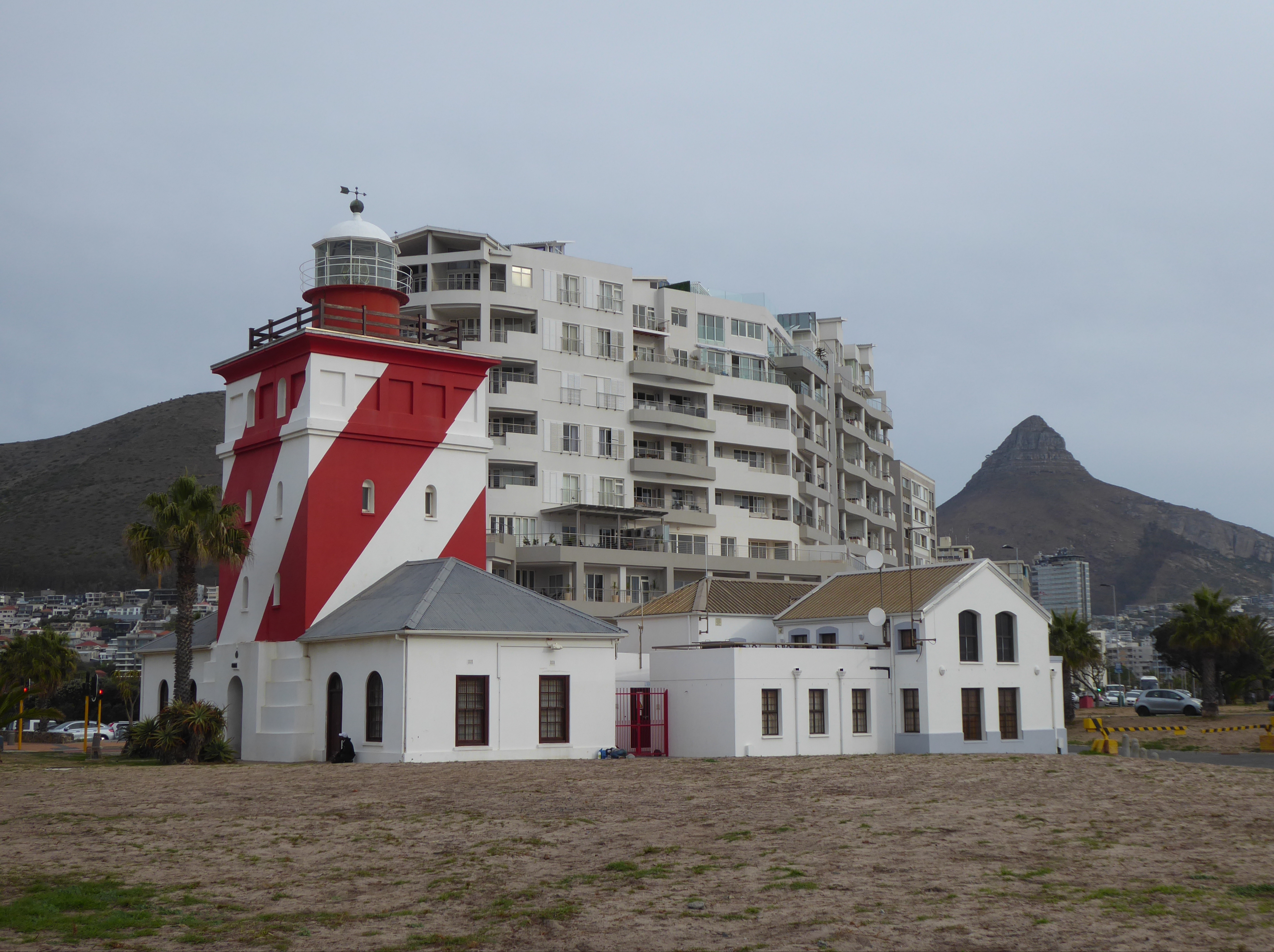
My original plans of strolling and hiking freely in Cape Town were short-lived. The parameters of what was deemed safe by the people I spoke to, all white, were oppressively narrow. I was told to avoid many areas during the day and not to walk anywhere after dark- the sun set around 6pm. It was difficult to access whether they were paranoid or prudent and I was too new in town to trust my own instincts.
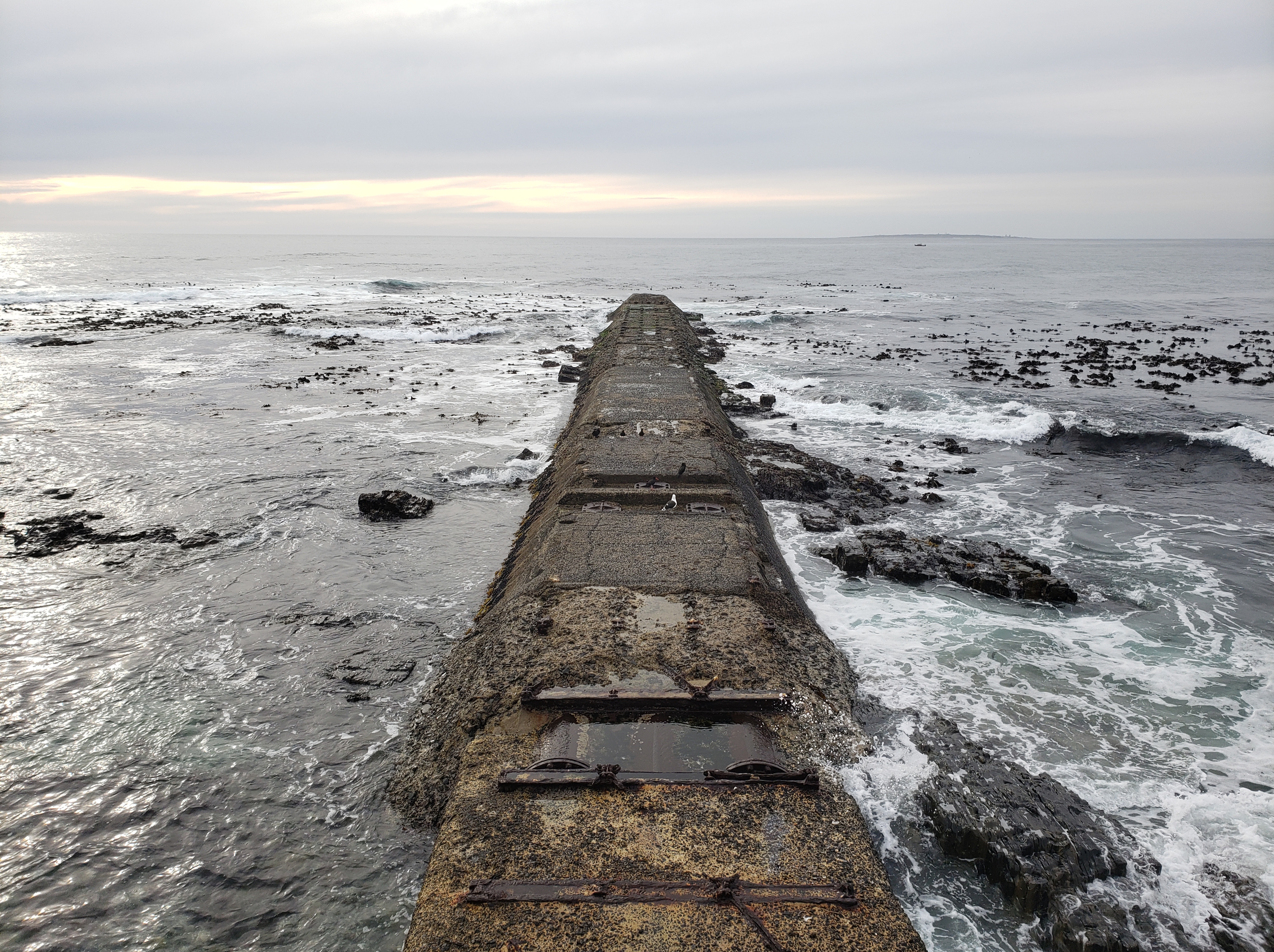
The admonishments to take Ubers, which I dutifully if unhappily did, to go even short distances in the evening had an upside. Many of the drivers came from Zimbabwe and were usually listening to music from their country. I would ask them about the upbeat, rhythmic guitar driven tunes and learned of the late, great Oliver Mtukudzi. His music, and that of other Zimbabwean music makers, was a great improvement over the pop/easy listening muzak I politely endured with other drivers.
The days were passing quickly and I was still blind to the city’s appeal, I sought to lift the shroud cast by the pervasive fear and glaring racial inequity. Admittedly, beauty abounds in Cape Town. The coastal drive, mountains, and nearby beaches are stunning.
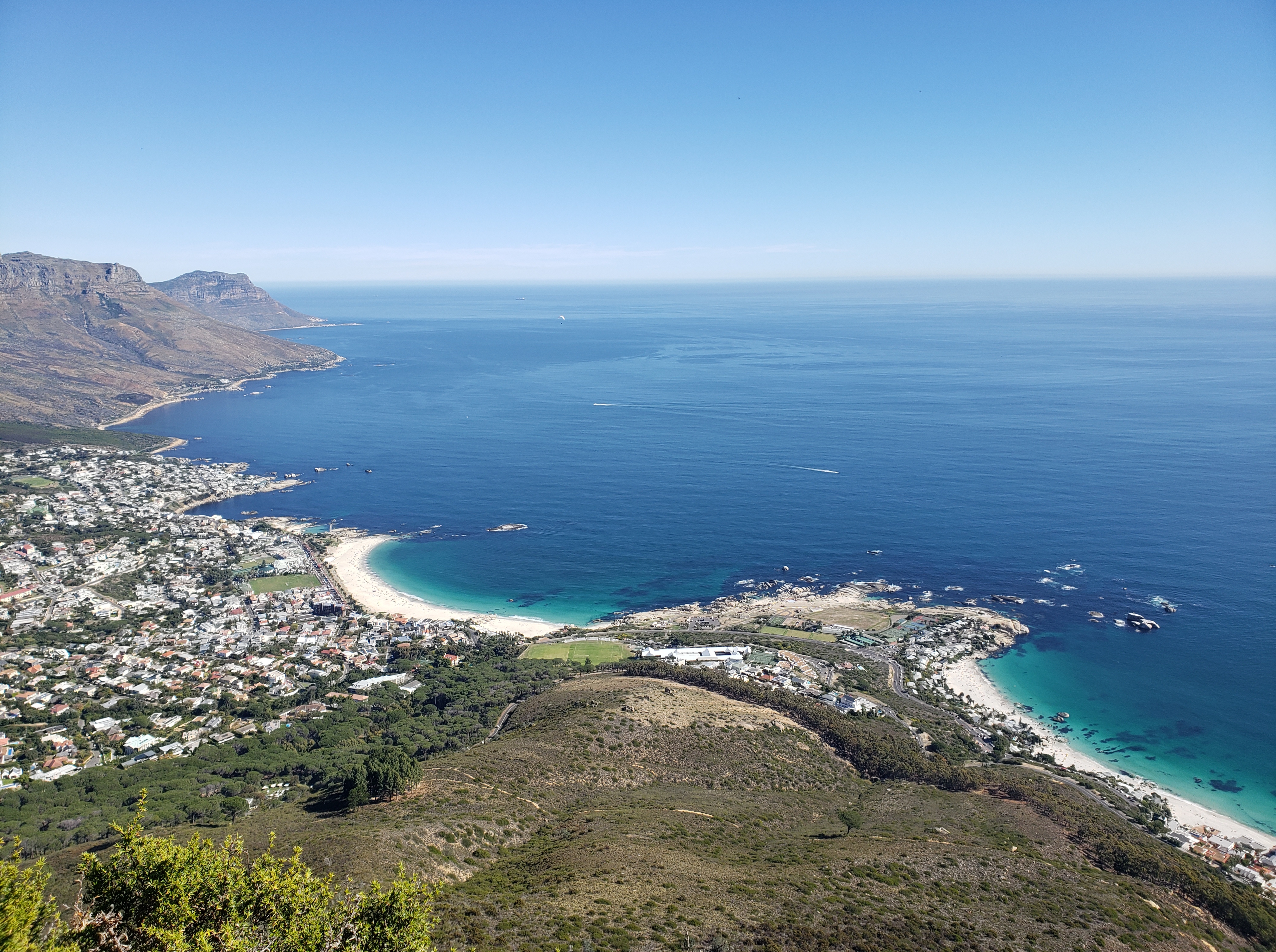
Penguins at Boulder Beach are delightful.
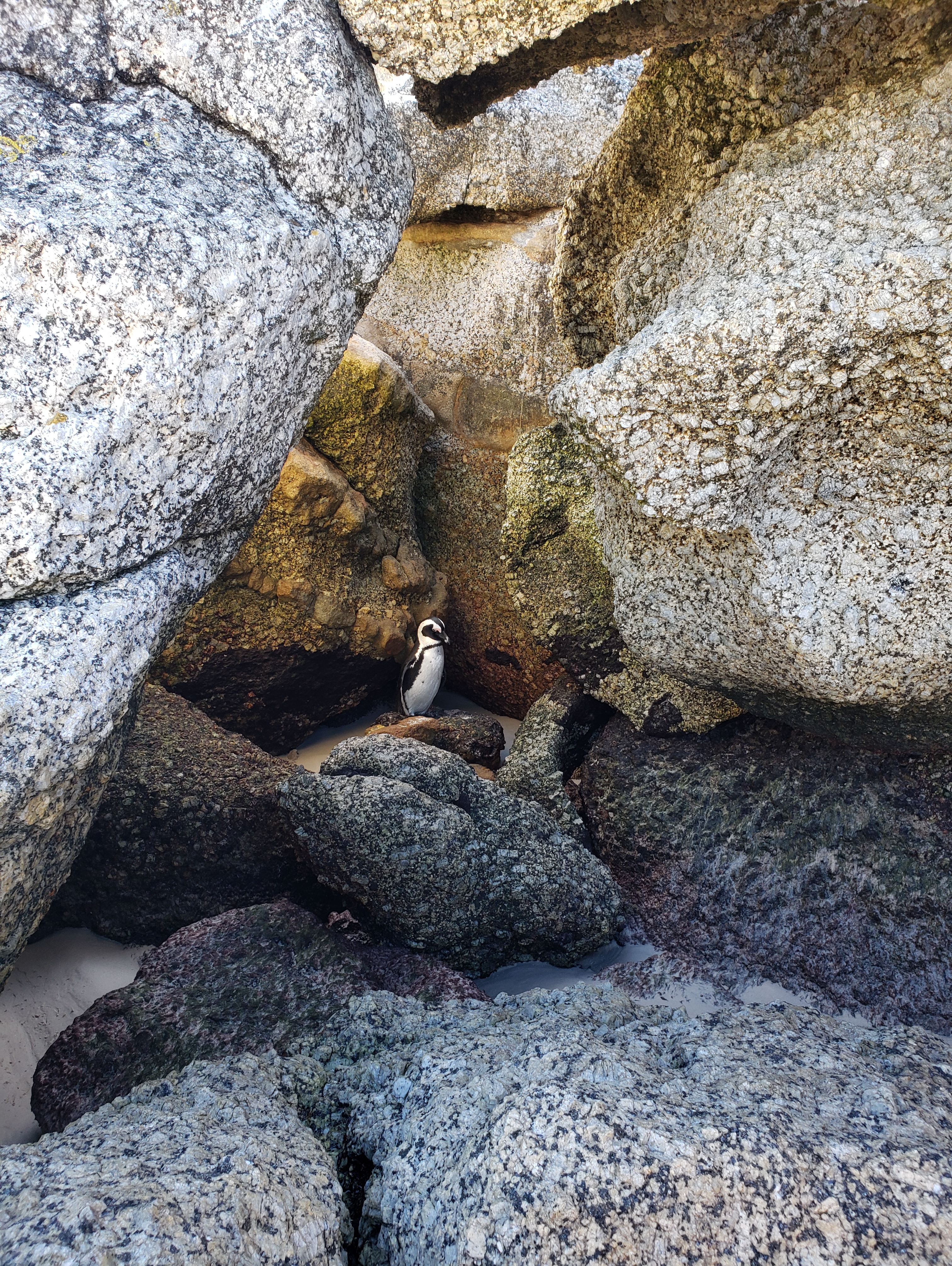
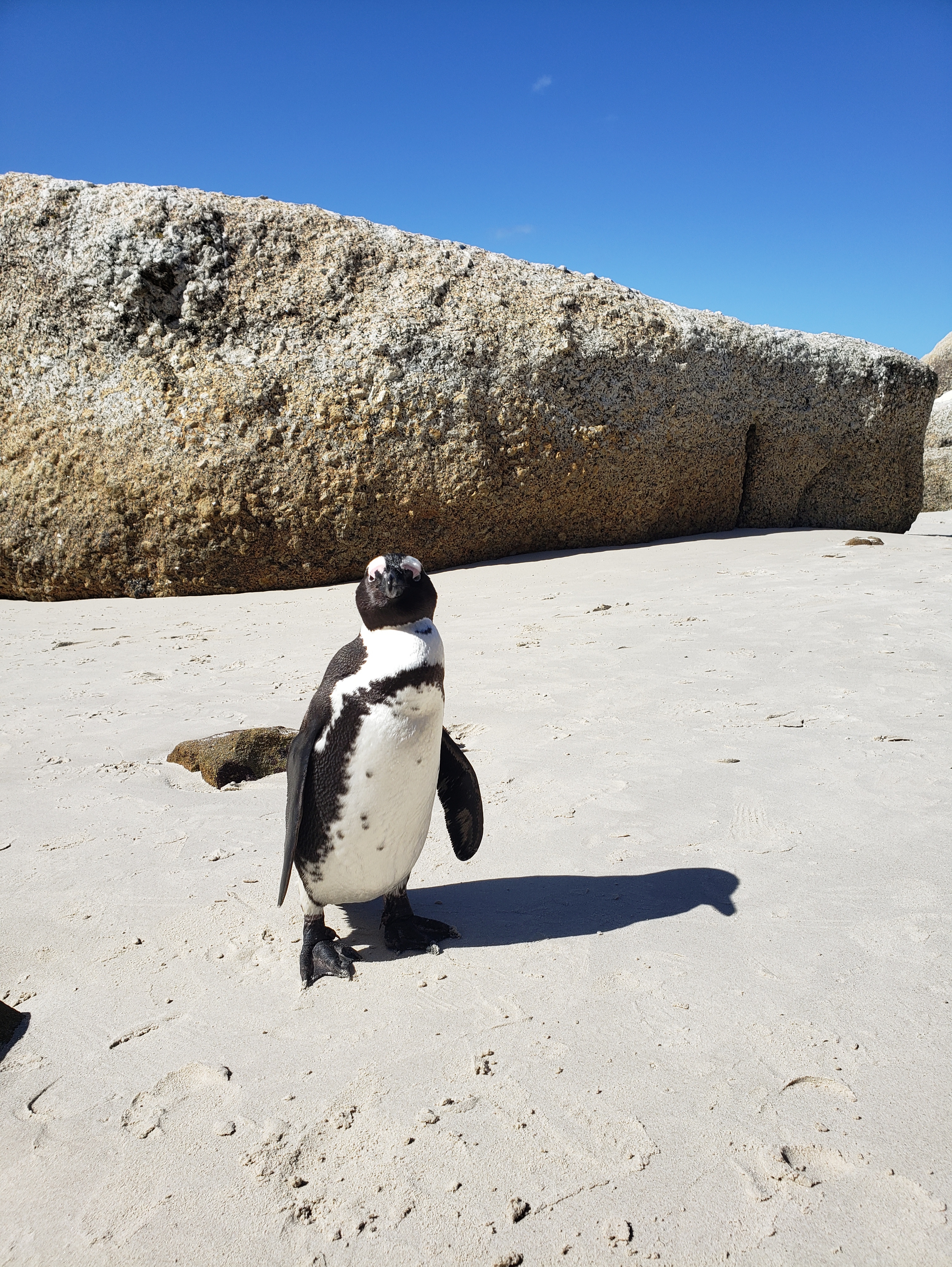
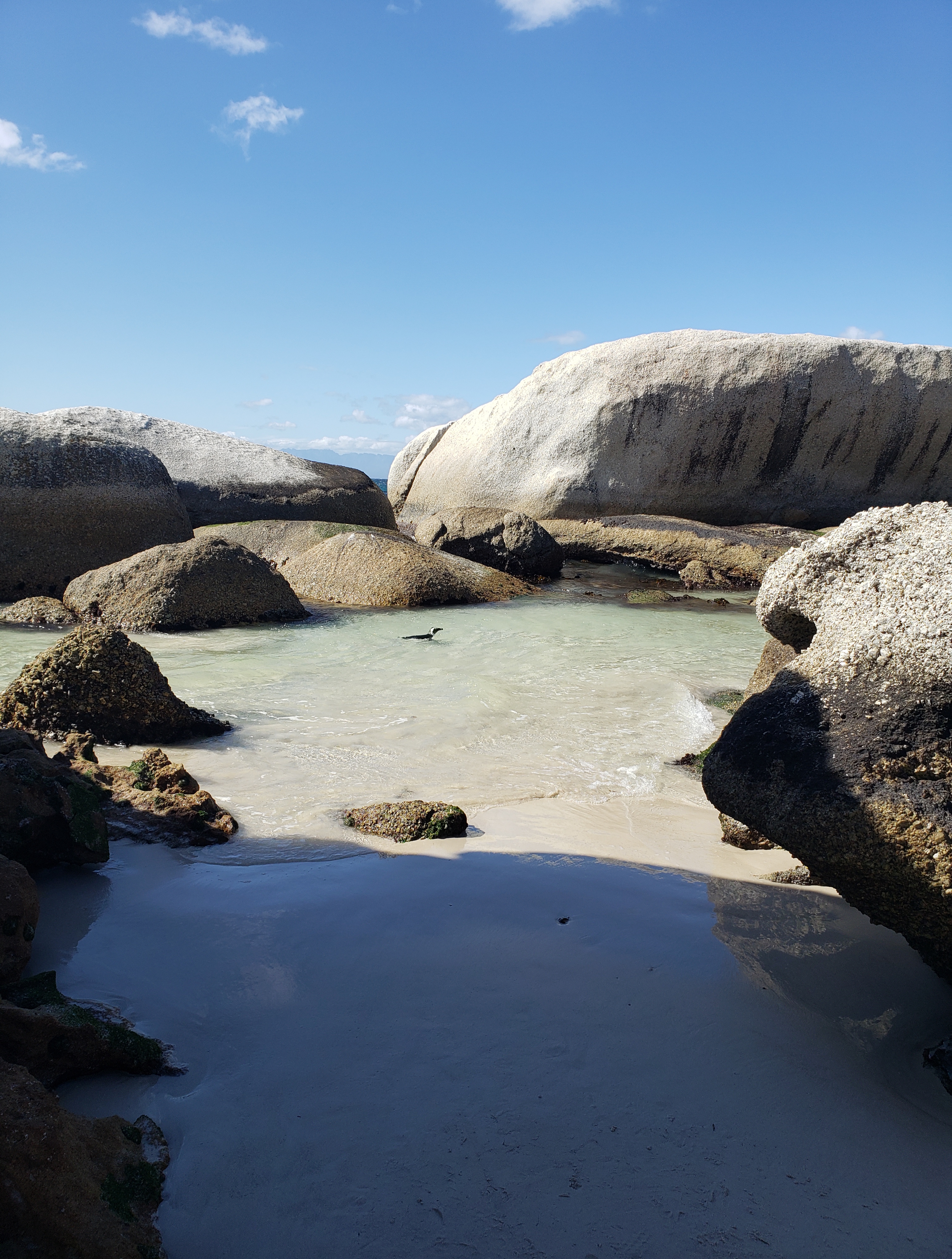
Lion’s head and Table Mountain offer breathtaking views.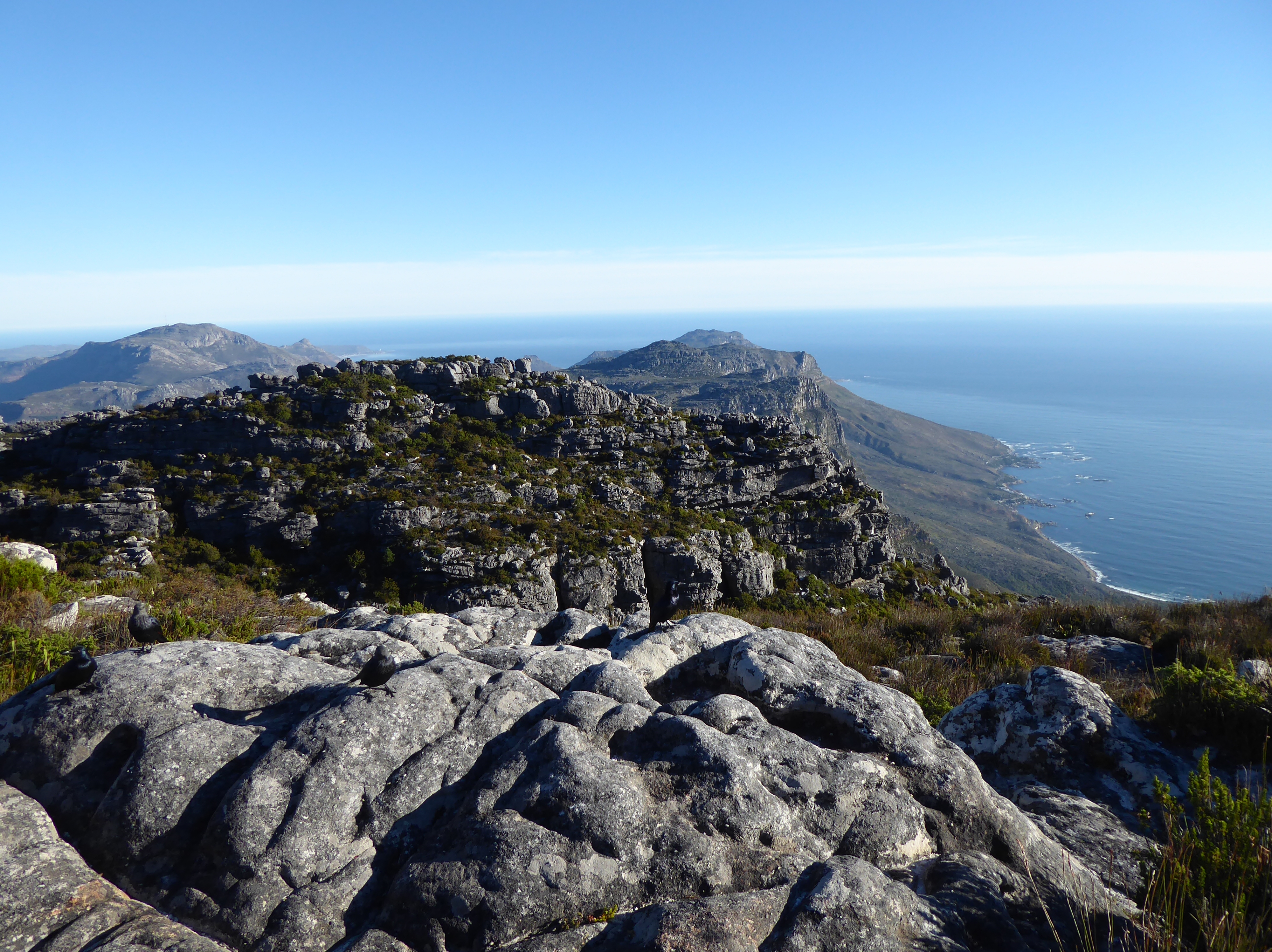
The V & A Waterfront, despite its large shopping malls, still has remnants of its fishing industry.
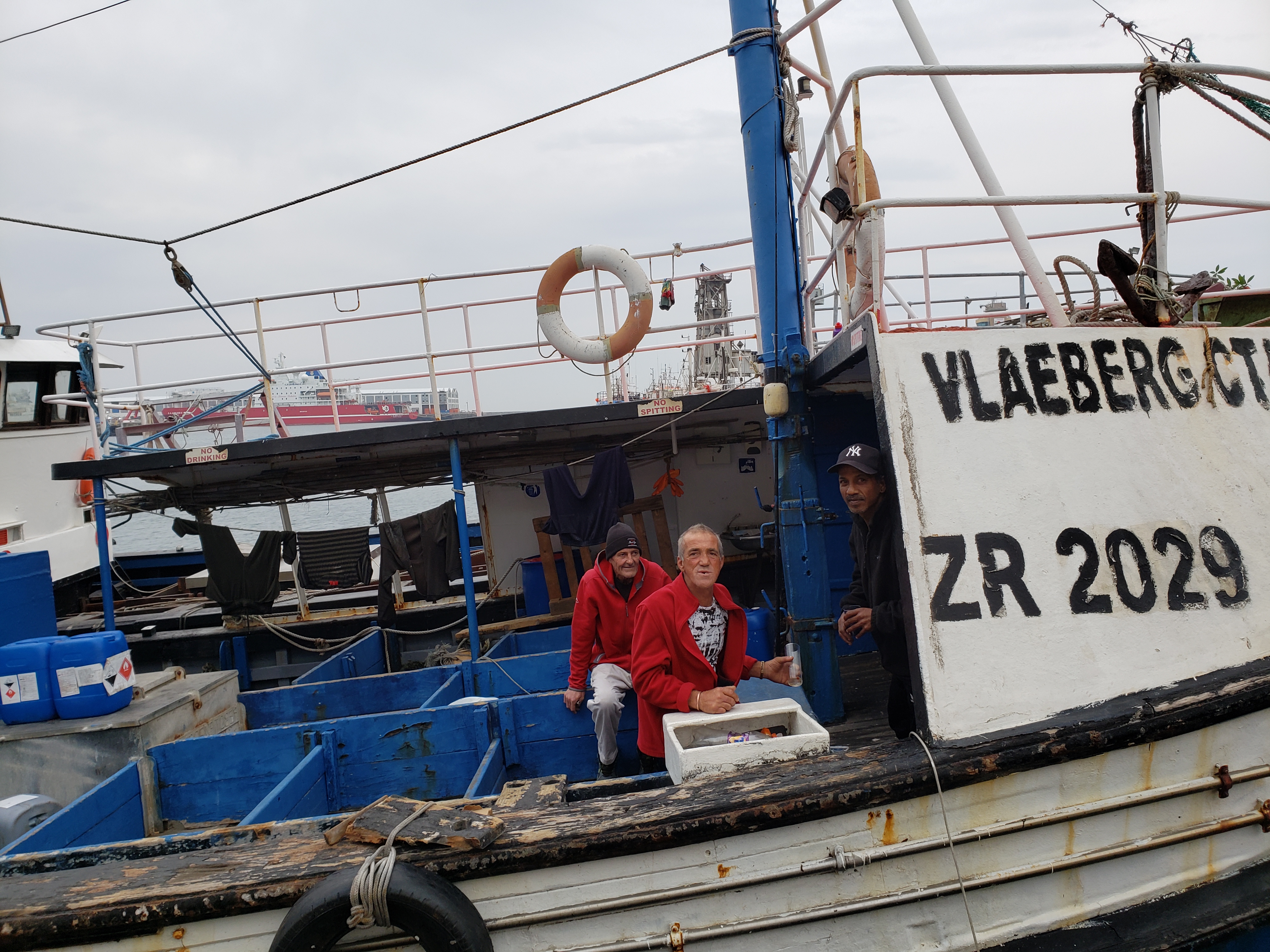
Kirstenbosch Gardens, once owned by Cecil John Rhodes, are gorgeous. 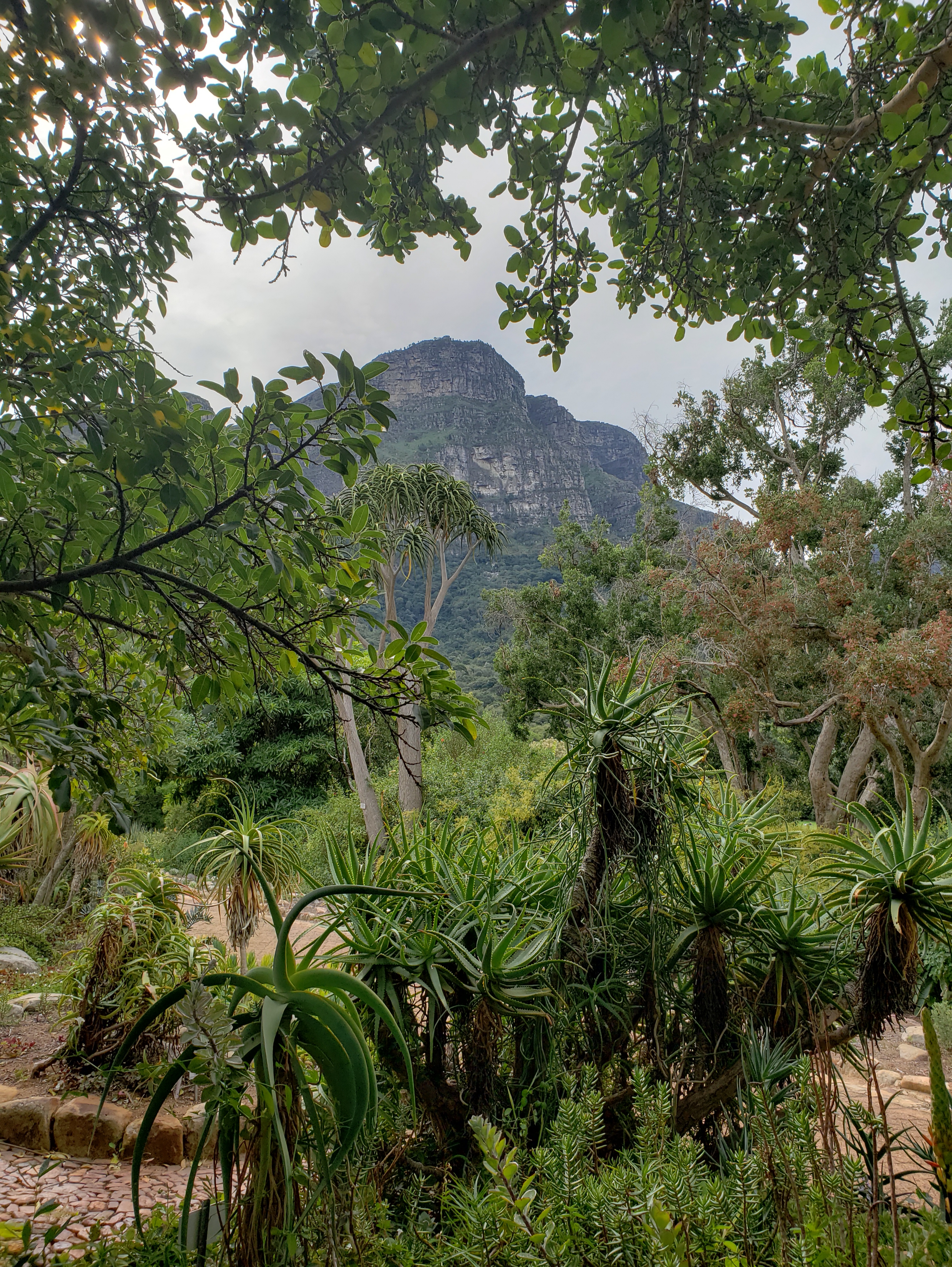

Colorful Bo-Kaap displays a thriving neighborhood with a fragile history and future.
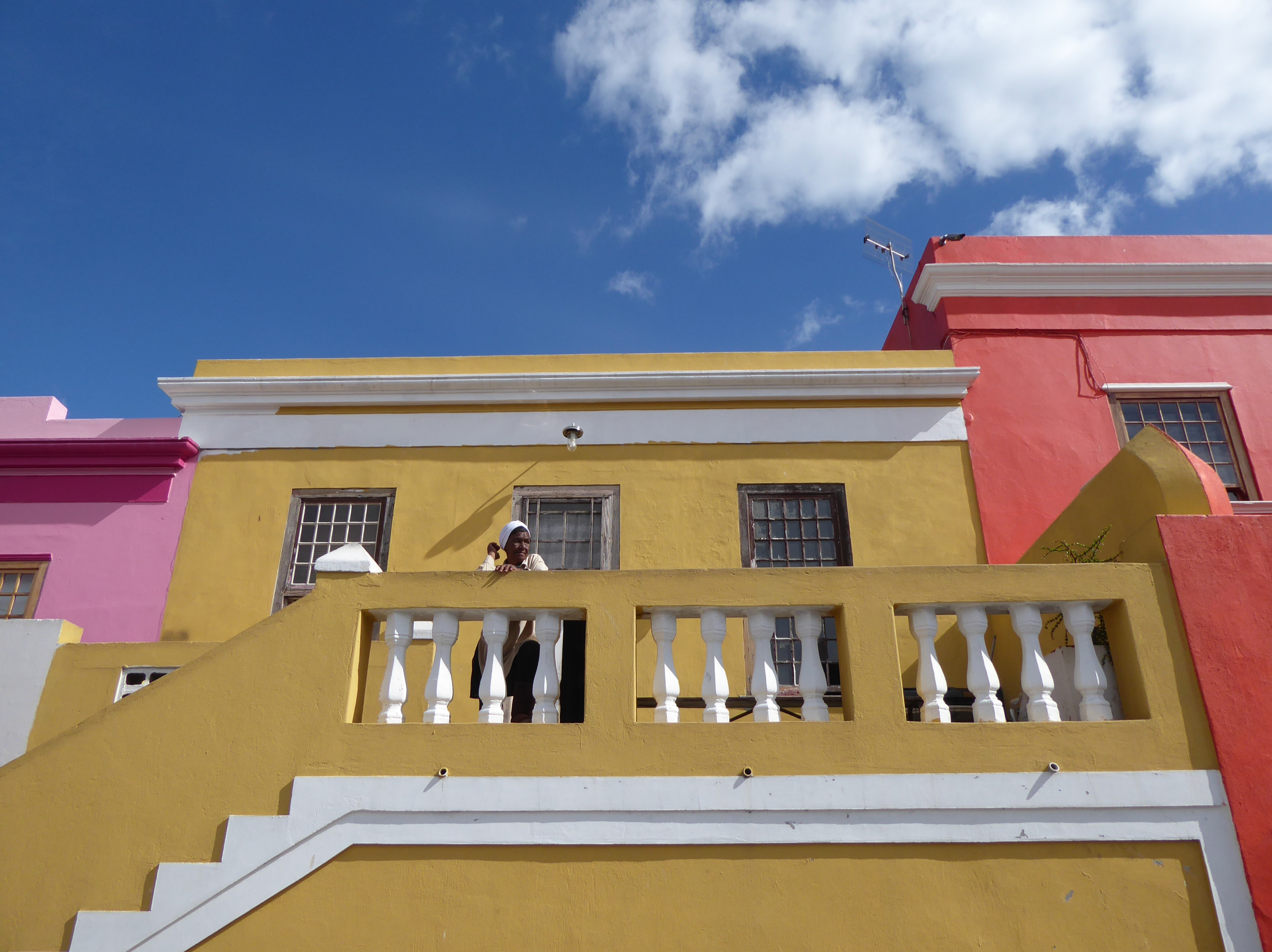
Historic Company Gardens offers a taste of the colonial past. The museums offer excellent collections of art.

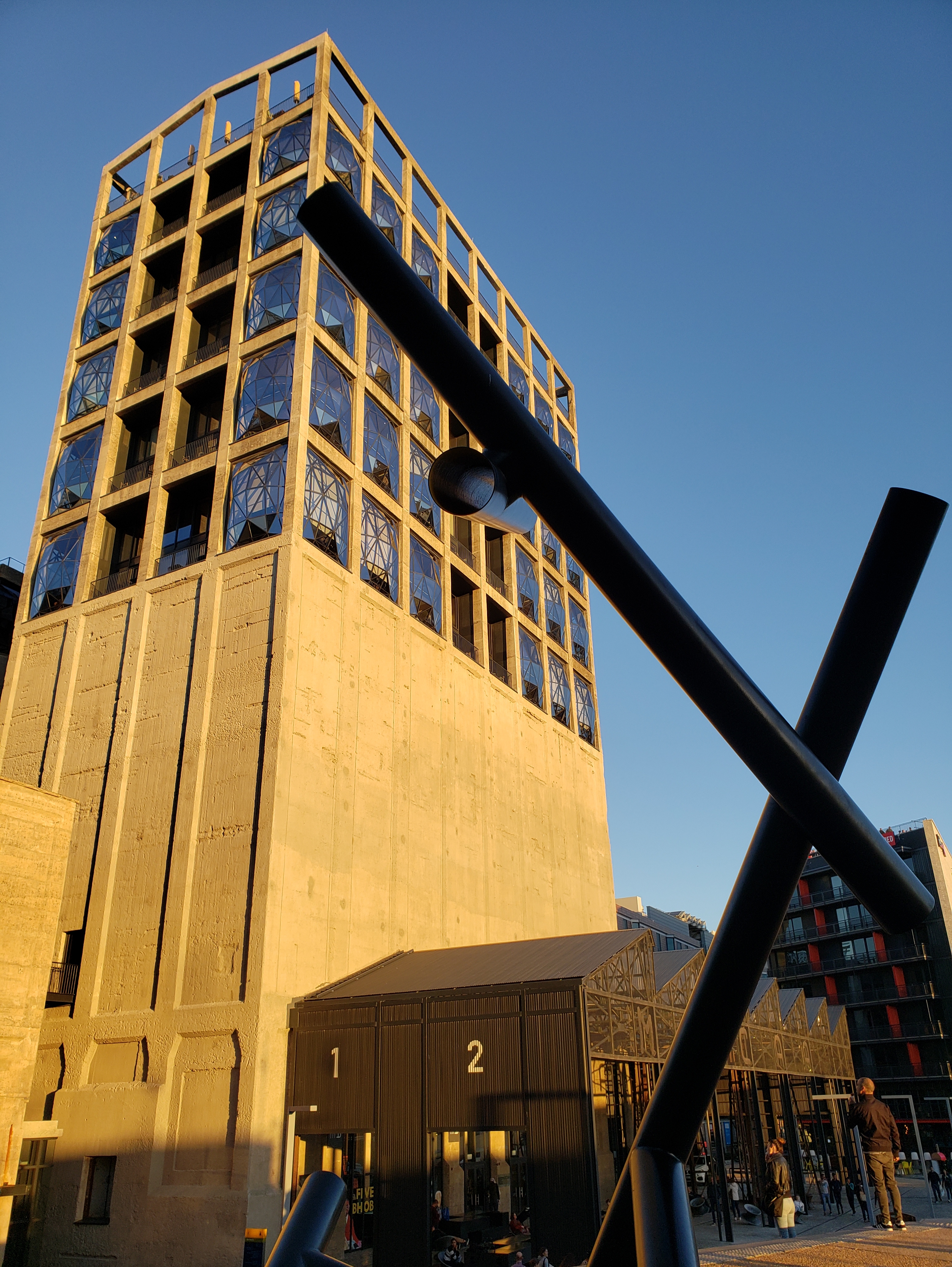
There is jaw-dropping architecture, namely the multi-level Zeitz Museum of Contemporary Art built from abandoned grain silos.
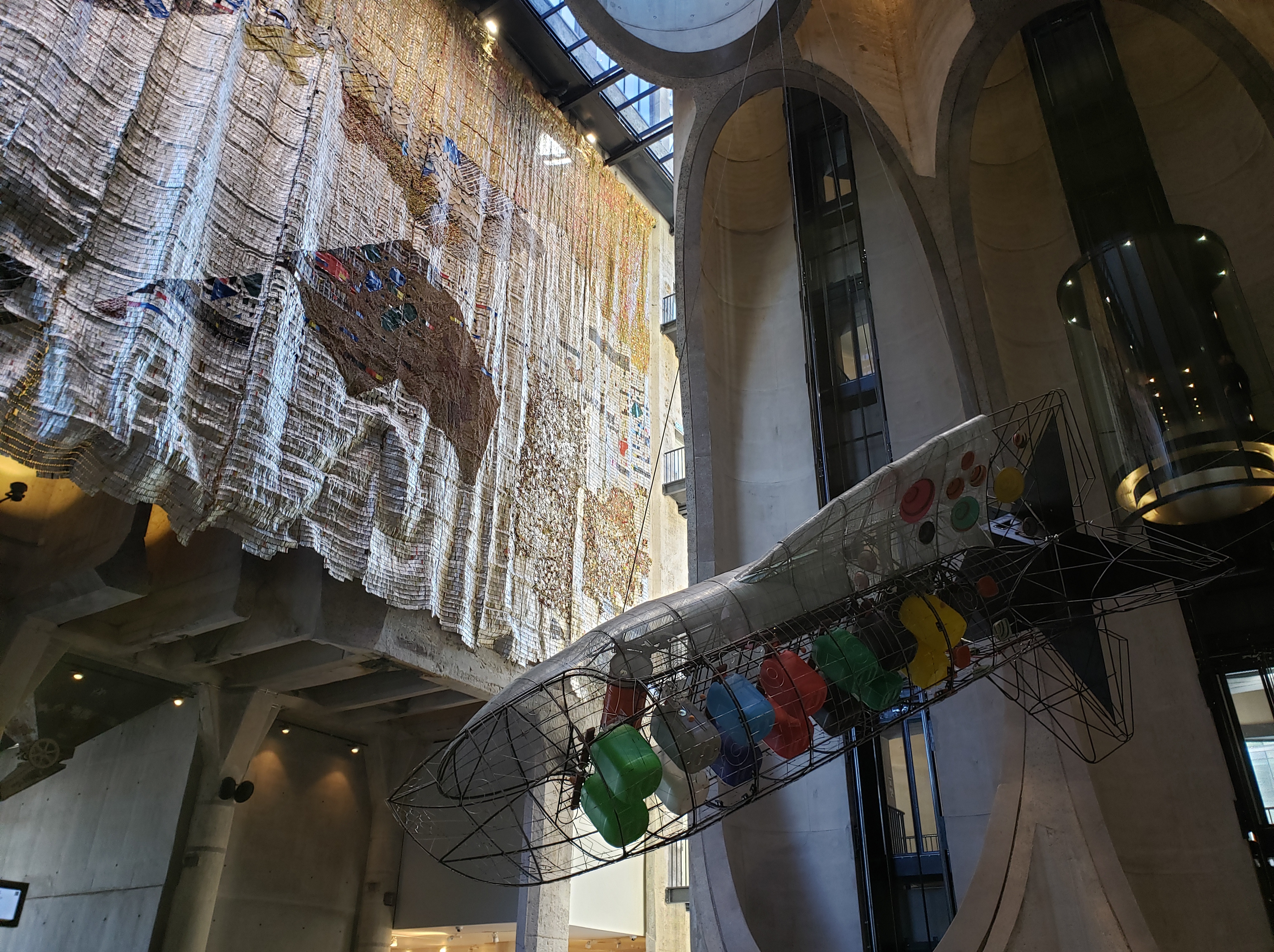
And the powerful and beautifully designed District 6 Museum which focuses on Apartheid’s devastating effect on communities and individual lives.
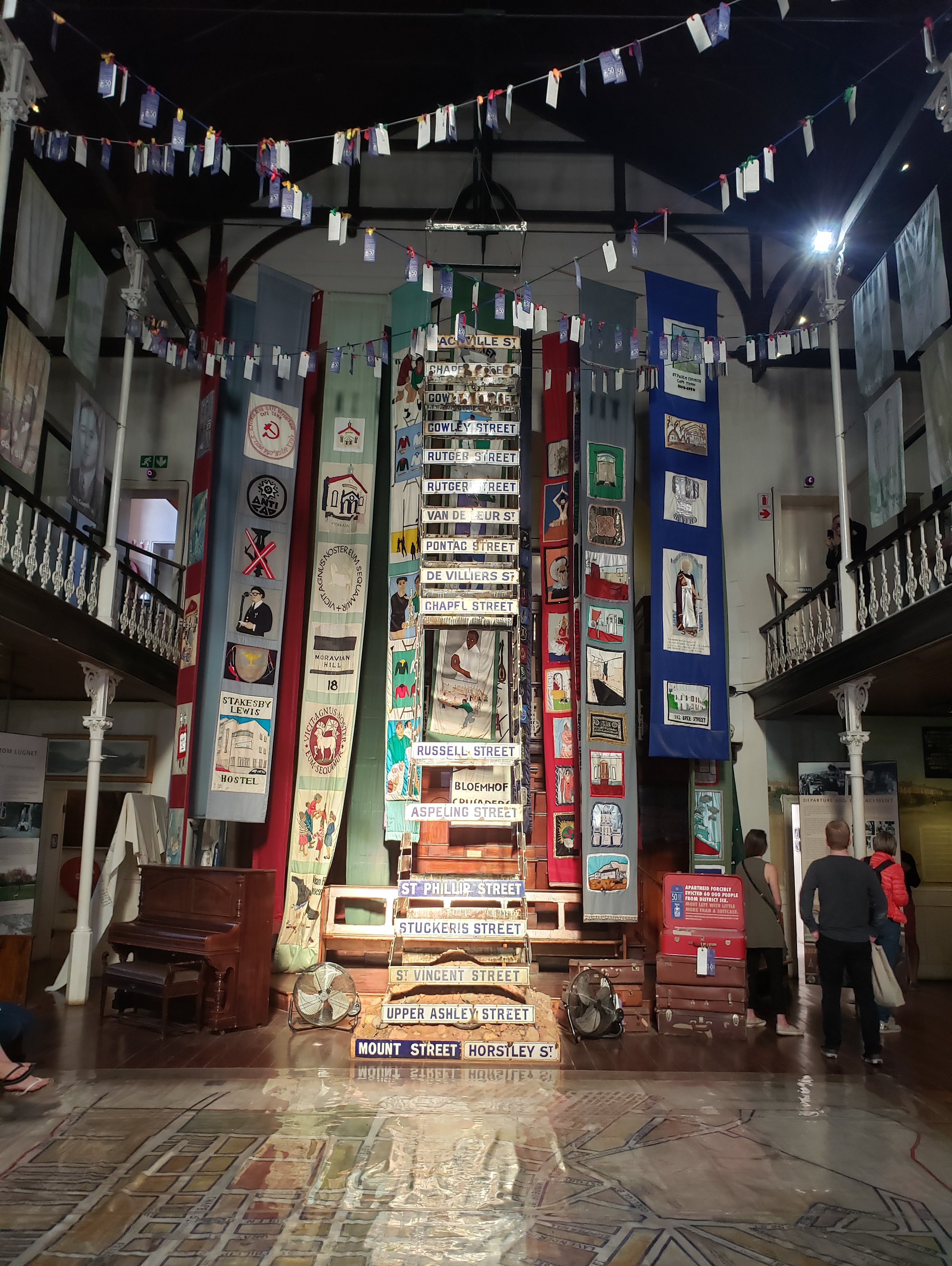
The hip, once marginal, neighborhoods of Woodstock and Observatory offer a taste of the gentrification to come ( for better and for worse) with cozy cafes, cute shops, art galleries, and award-winning restaurants.
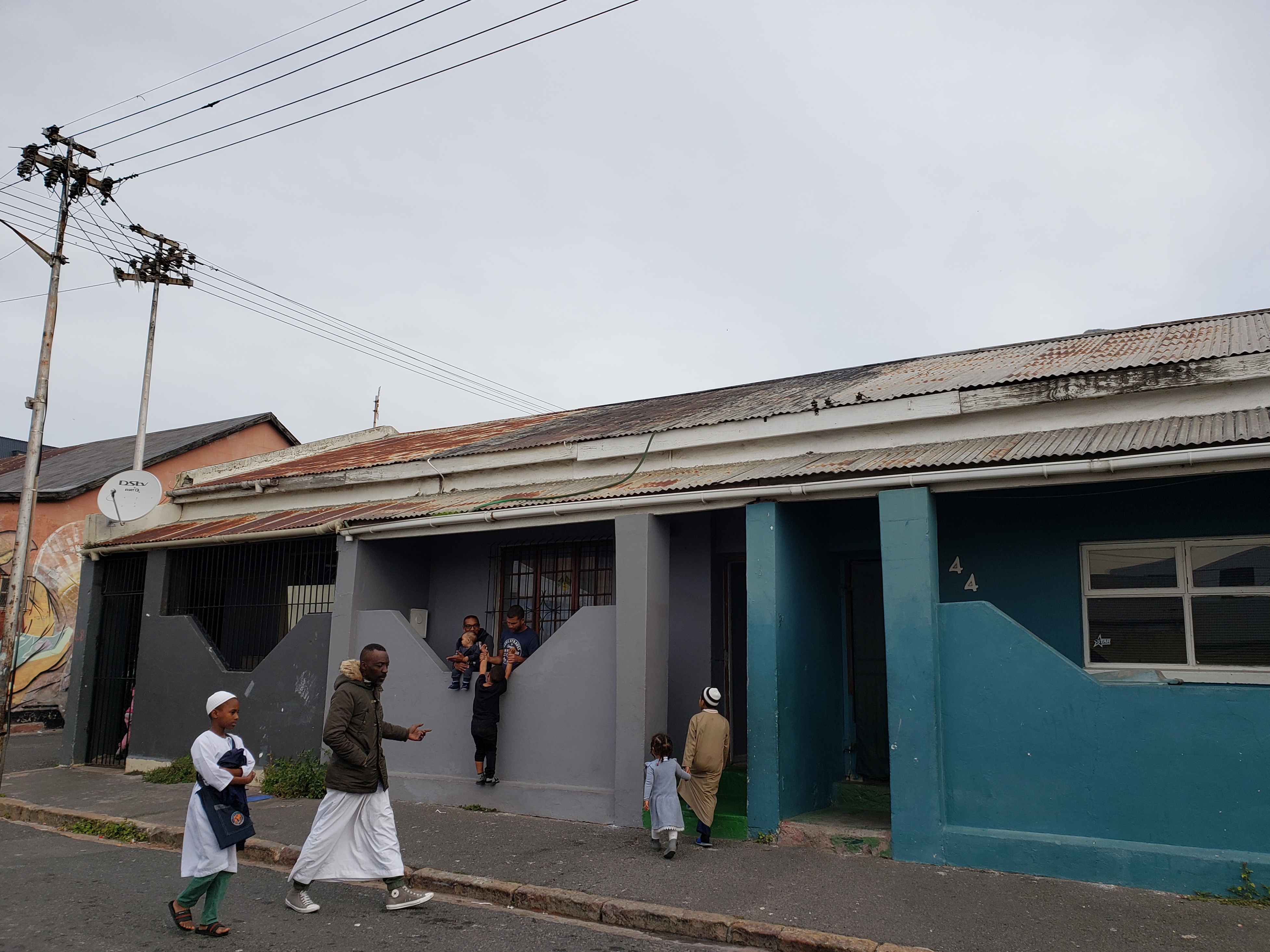
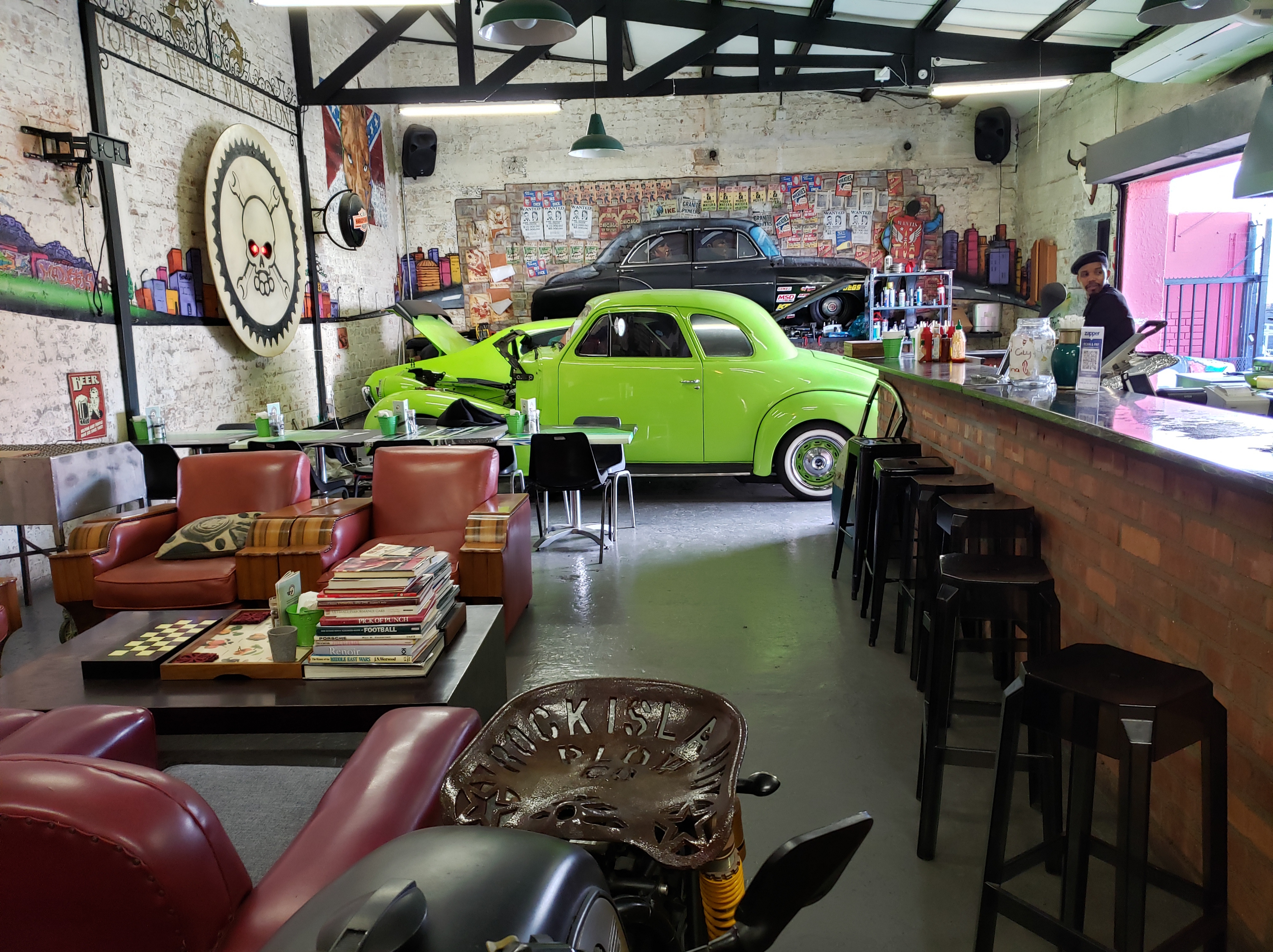

And nearby towns offer different perspectives and experiences.
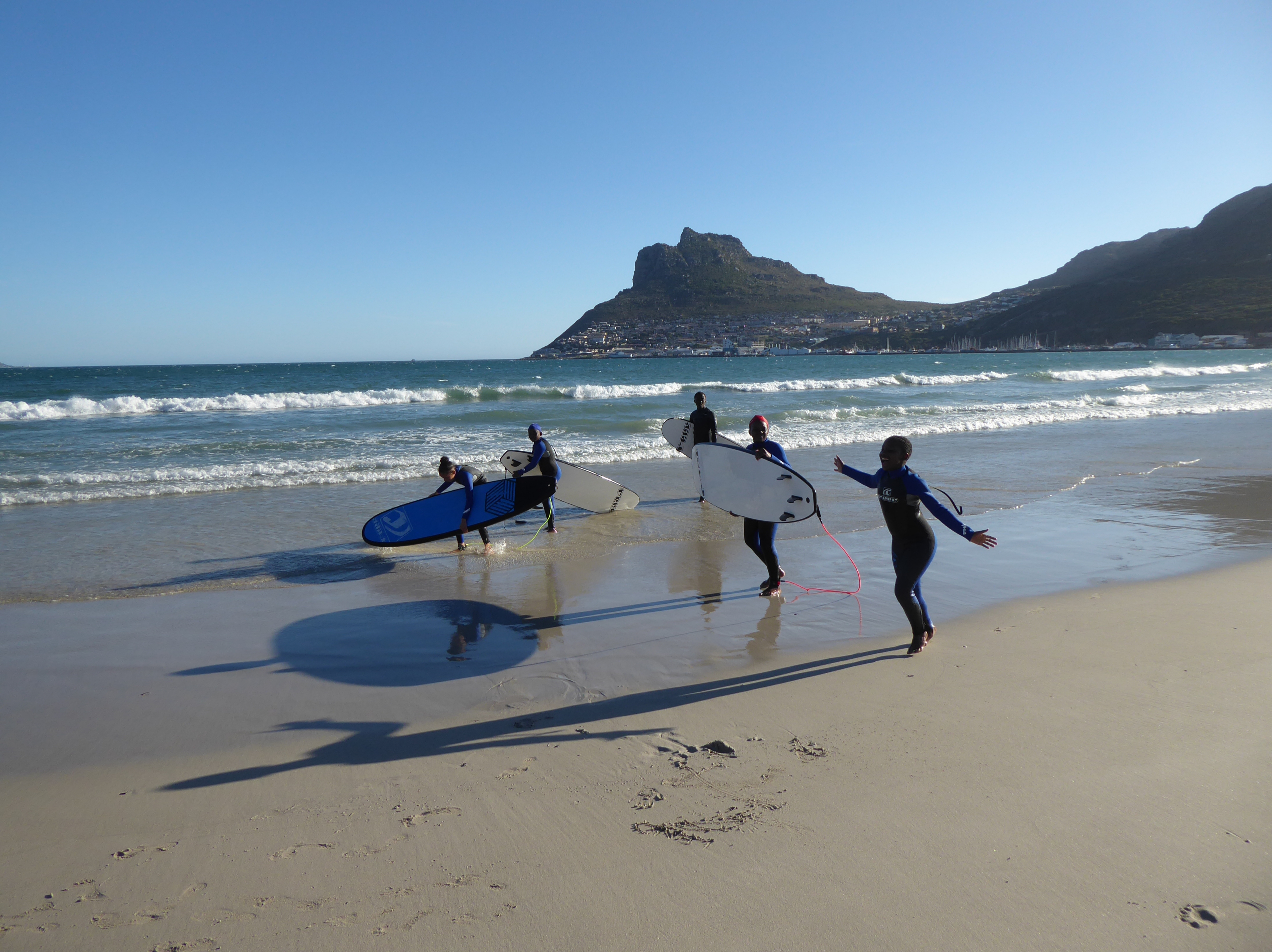
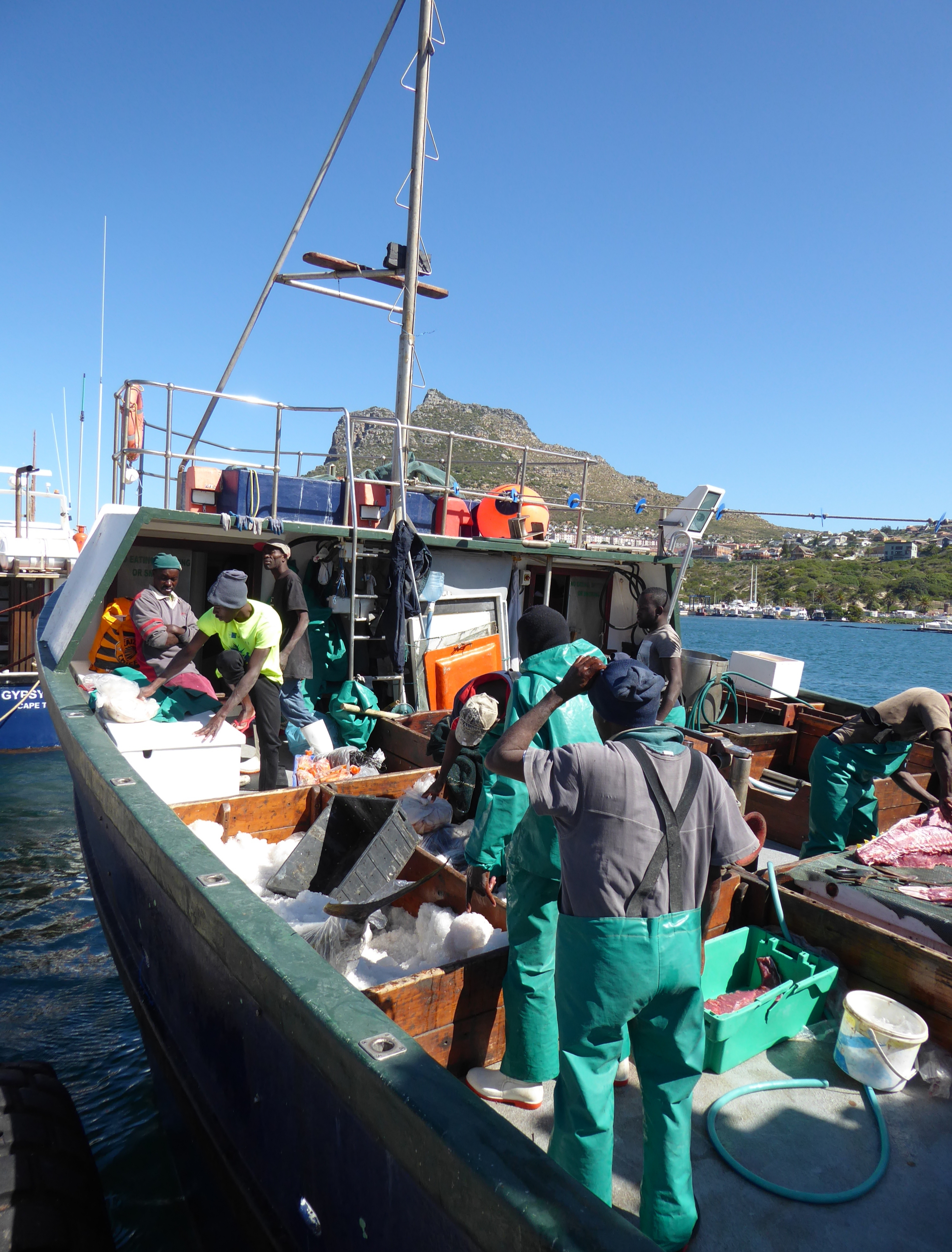
Some chance encounters in Cape Town led to invitations for dinner at some exquisite abodes worthy of House and Garden covers, including a Passover Seder where the guests were mostly Christian. Their high fences, security alarms, and car culture creates an allegedly safe, yet insular lifestyle. My hosts were kind, welcoming, educated, interesting, and white. My discomfort with the country’s skewed social order, not that my own country is exempt, was usually best kept to myself.
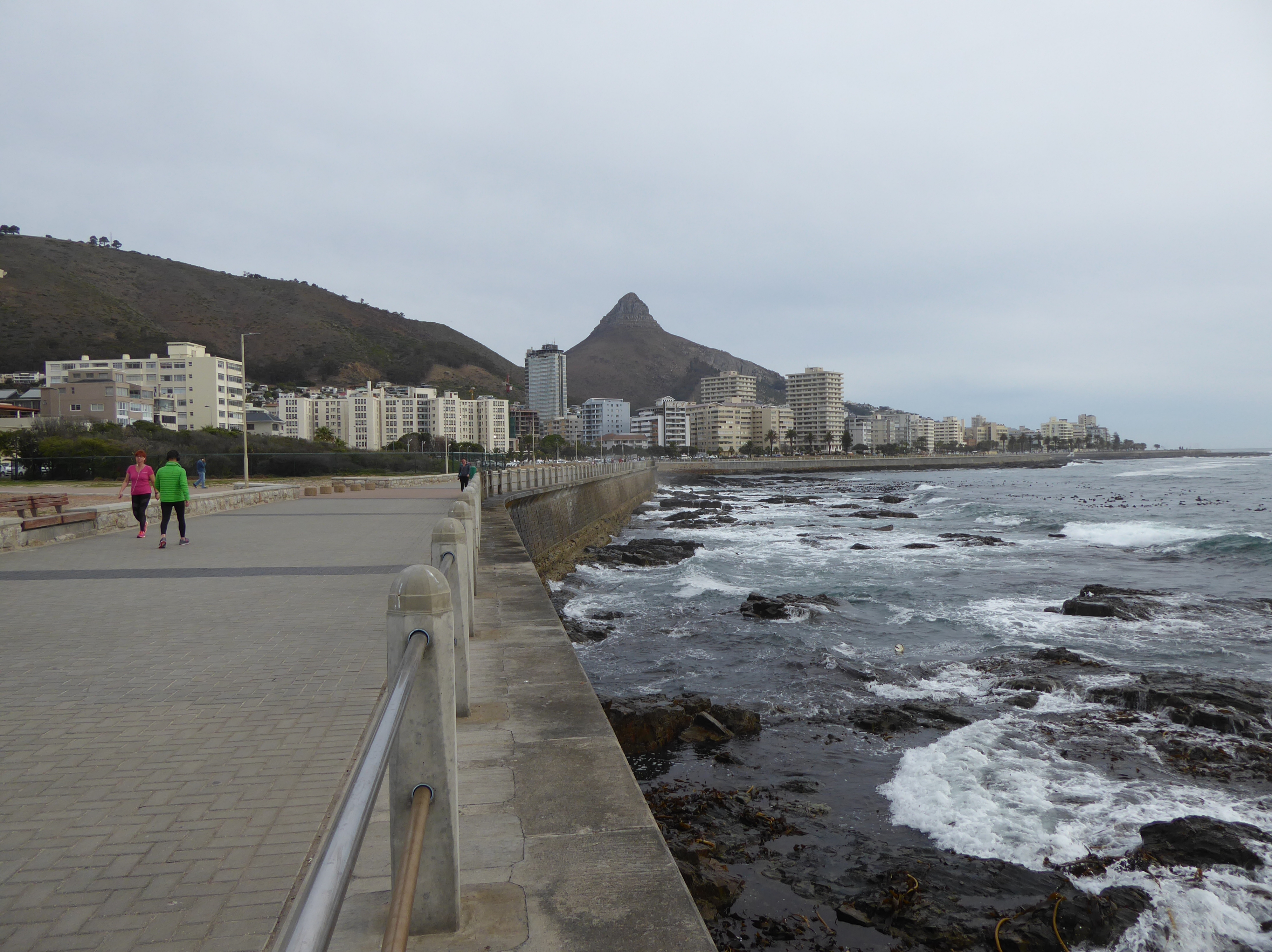
While my strolling around Cape Town increased with time, the warnings remained steady.
In an effort to stay on the “safe” streets during my heavily curtailed precious moments on foot, I asked people, en route, the best way to get somewhere. Conversations would begin and coincidentally many of the people I spoke with were planning on attending AfrikaBurn. “AfrikaBurn?” I asked. I’d never heard of it.
To be continued…
